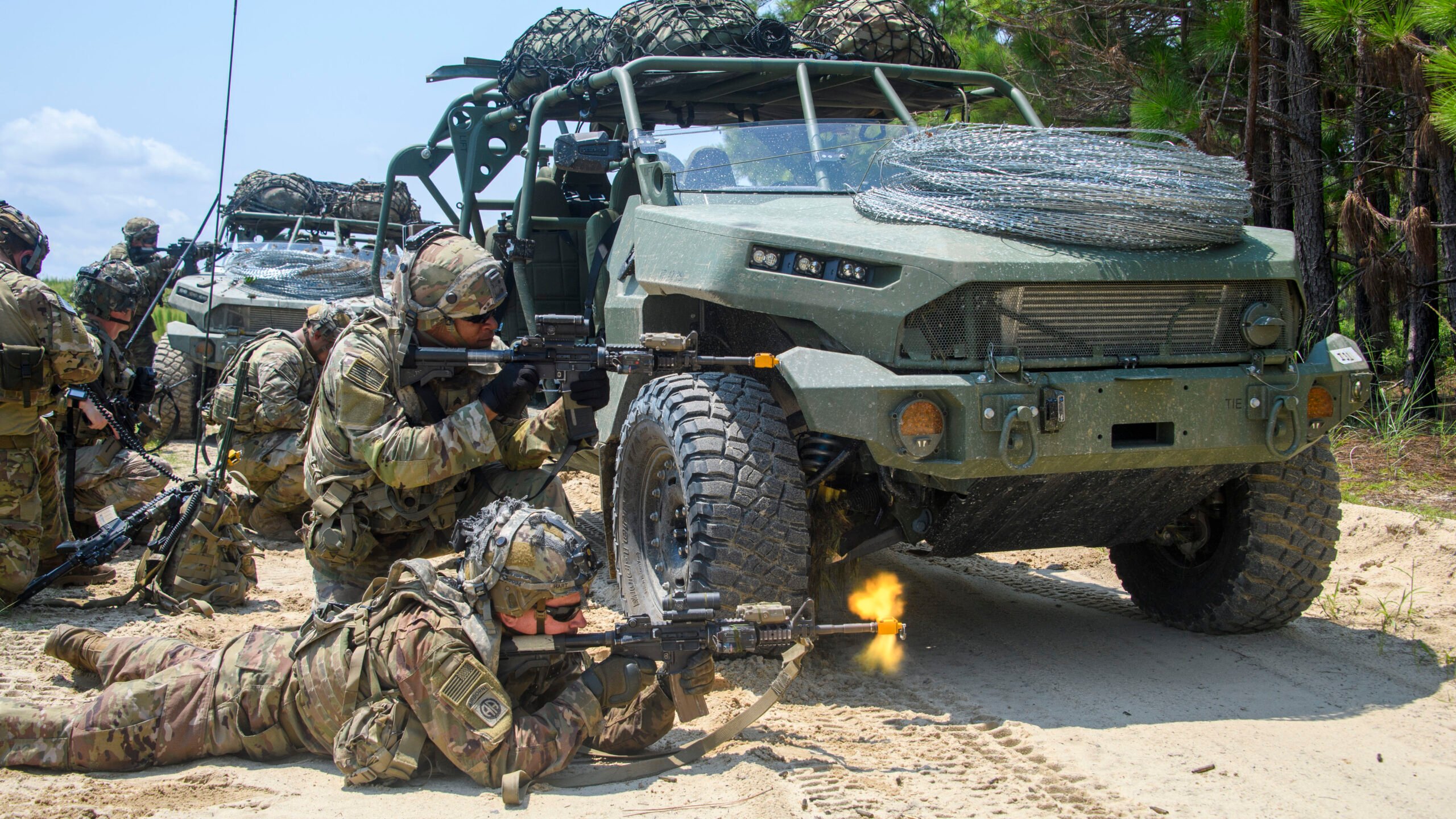
First delivery of the the Infantry Squad Vehicle, GM Defense’s first program awarded in June 2020, was within 120 days of contract award. (GM Defense)
WASHINGTON: The Army’s new Infantry Squad Vehicle is “not operationally effective” for combat or engagement, security cooperation and deterrence (ESD) missions against near-peer threats, according to a scathing annual report from the Pentagon’s chief weapons tester.
The report by the Director of Operational Test and Evaluation, published Thursday [PDF], found that while it serves as a capable troop carrier in moderate conditions, the vehicle lacks adequate force protection and communications capabilities, and it hinders soldiers’ ability to fire at an adversary. The report notes that the program does have a “corrective action plan” in place to ameliorate the problems ahead of the full-rate production decision in May this year.
In missions during Initial Operational Test and Evaluation in August, a rifle company using ISVs failed to avoid enemy detection, ambushes and engagements during the “majority” of their missions, according to the report.
RELATED: Read the Army’s response to DOT&E’s criticisms here
“In order to traverse cross country routes and wooded terrain, the unit was forced to reduce their speed, resulting in slowed movement, or maneuvered on improved routes, negating any element of surprise,” the report found. “During missions, the unit experienced numerous casualties, delaying mission accomplishment and degrading its combat power for follow-on missions.”
The ISV vehicle, made by GM Defense, is meant to be a light, expeditionary vehicle not billed for direct combat, but designed “to modernize Army Infantry Brigade Combat Teams” and to allow “Soldiers to close on an objective with less fatigue and greater readiness,” according to the Army.
The ISV can carry a nine-soldier light infantry squad, is transportable by a CH-47F Chinook helicopter and is airdroppable by a C-17 and C-130. GM Defense won a $214 million contract to produce the ISV in 2020 and delivered the first vehicles just four months after the contract award. The Army plans to purchase 649 of them.
GM Defense declined to comment for this report, referring Breaking Defense to the Army’s Program Executive Office Combat Support and Combat Service Support. As of press time, PEO CS&CSS has not provided responses to Breaking Defense’s questions posed Thursday.
Testers Take Issue With Comms, Guns
The DOT&E report found that the lack of a mounted communication capability requirement on the ISV led communication between soldiers, squad leaders and platoon leaders to be “intermittent and not reliable” when ISVs were on the move, which in turn degraded situational awareness for soldiers on extended range missions from 62 to 300 miles.
When it came to combat, the report said that soldiers’ weapons were not easily accessible while ISVs were on the move. While the ISV can mount a swinging machine gun, “the ability for the soldier to efficiently employ the weapon on the move was a challenge because the soldier’s field of fire was hindered by trees, foliage, and other obstructions when extending the swing mount.” The report also found that the vehicle lacks the ability to carry supplies a unit needs to sustain itself for 72 hours.
The report also called the system “not operationally suitable” due to “poor developmental test reliability and deficiencies in training, maintenance, safety, and human system integration identified in IOT&E.” According to the Pentagon testers, the “majority” of ISVs’ failures occurred in the remote desert of Yuma Proving Ground, Ariz, where the terrain is more rugged and hilly. Problems included loss of steering capability, cracked and bent seat frames, and engine cracks and overheating.
The ISV was more reliable in the “less challenging,” flatter woods at Fort Bragg, N.C. Still, soldiers also told DOT&E that the rear seats caused back pain, and DOT&E added that the open design concept of ISVs “exposed soldiers to potential injuries from trees, branches, sticks, and other debris.”
However, the report did find that the vehicle is effective as a troop carrier, passing tests over wooded areas and cross-country terrain.
“The ISV is quiet, agile, and provides an enhanced off-road mobility capability for a nine-man infantry squad with their personal weapons and equipment. The ISV allows an infantry unit to move over extended distances rapidly, reducing fatigue,” the DOT&E report states.
Connecticut lawmakers to grill Army, Lockheed about job cuts at Sikorsky helicopter unit
“The Connecticut delegation has questions about why, with that [FY24] appropriation in hand, this happened,” said Rep. Joe Courtney, D-Conn.


























